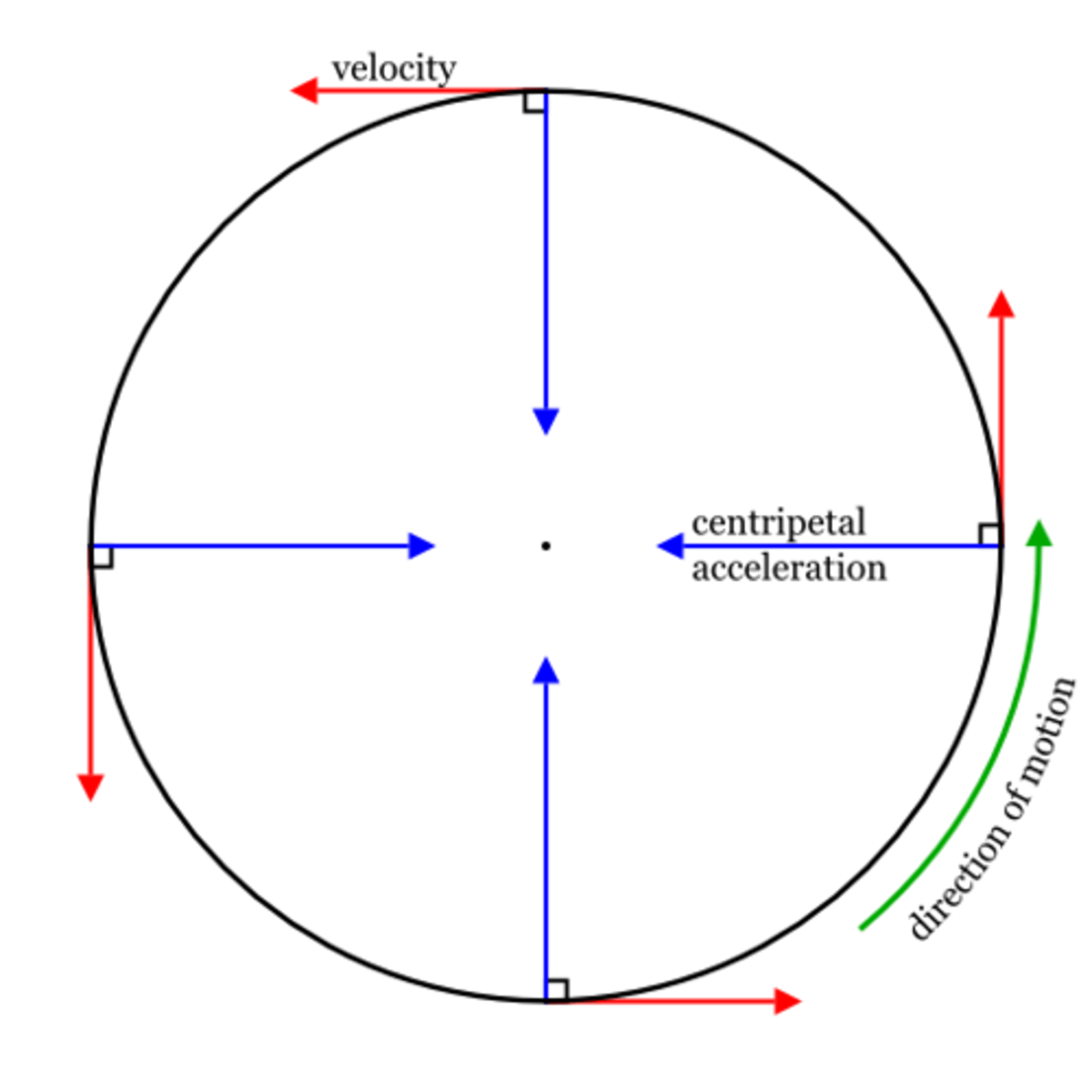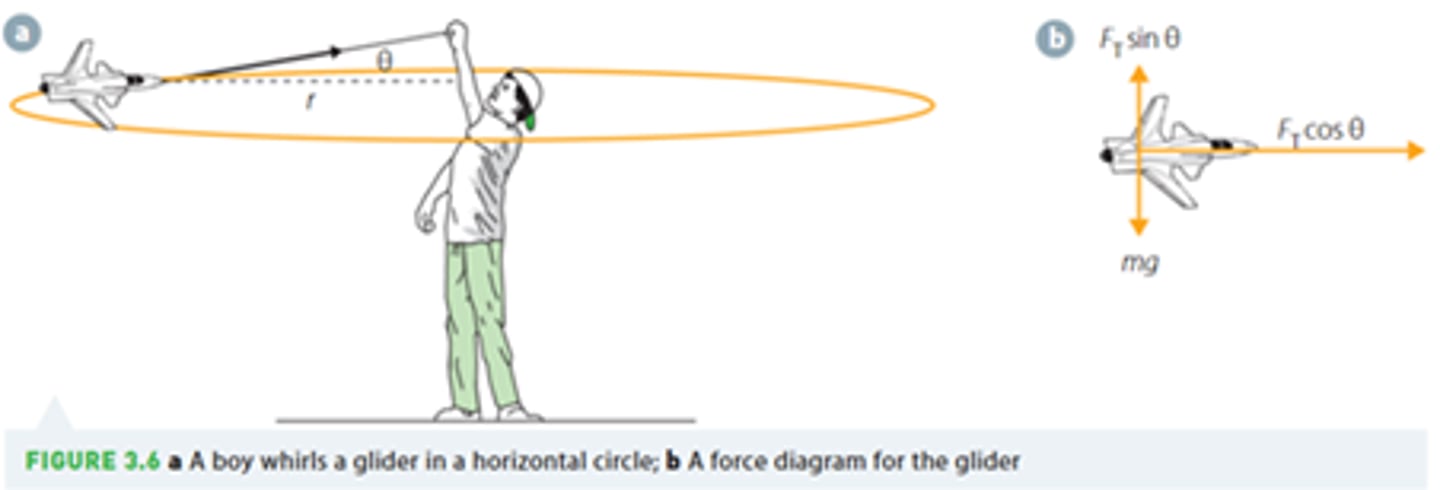CIRCULAR MOTION TO REMEMBER
1/12
There's no tags or description
Looks like no tags are added yet.
Name | Mastery | Learn | Test | Matching | Spaced |
|---|
No study sessions yet.
13 Terms
Uniform circular motion
An object rotating at a steady rate (constant speed) moves in uniform circular motion.
Angular displacement, θ
Angle in radians of the object's displacement after a time t. θ = 2πft
Angular speed, ⍵
Angular displacement per second. ⍵ = 2πf
Linear velocity
The velocity of the object at one instant. Directed along the tangent of the circle i.e. at right angles to the centripetal force
Centripetal acceleration
Change in the direction of the velocity per second. The centripetal acceleration is directed towards the centre of the circle. a = v²/r = r⍵²
Centripetal force
Resultant force on an object moving in uniform circular motion, directed towards the centre of the circle. F = mv²/r = mr⍵²
What are the directions of centripetal acceleration, centripetal force, velocity & direction of motion
Acceleration & Force = same direction, towards the centre of the circle
Velocity is perpendicular to the direction of the force

Vertical circle
Bottom has the highest tension
Top has the lowest tension

Horizontal circle
R = mg
Centripetal F = mv²/r
∴ v ∝ radius of the road

Banked road
Rcosθ = mg (1)
Rsinθ = mv²/r (2)
(2)/(1) → tanθ = v²/rg
∴ v² ∝ θ

Revolutions per minute → Radians per second
(𝔁 x 2π) / 60 = rad s⁻¹
Radians per second → Revolutions per minute
(𝔁 x 60) / 2π = rev min⁻¹
Equation linking θ, ⍵, t
θ=⍵t